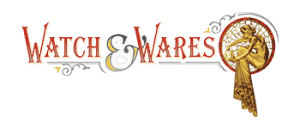Sell Your Luxury Items Smarter by Knowing These Essential Jewelry Terms
If you’re seeking to sell luxury items, whether to make extra cash or simply declutter your jewelry box, it’s important to have a basic understanding of essential jewelry terms. Knowing the terminology surrounding your accessories can help you present them accurately to potential buyers and know the fair value of your luxury items. If you’re ready to sell luxury items but want to ensure you get the best price possible, make sure you know these essential jewelry terms.
Important Ring Terminology
Whether you’re shopping for an engagement ring or want to sell an inherited piece, there are a few key terms you should know before buying or selling. Of course, most people are familiar with the stone — most commonly a diamond — but fewer are aware of the setting and the band. The setting is where the diamond or other gemstone is mounted. There are several different types of settings to choose from, including a prong setting, a bezel setting, and a pave setting.
The other major aspect of any ring is the band. The band is the circular part of the ring that goes around the finger. The simplest rings, such as wedding rings, contain only the band and no setting or stone. Bands can be made of various metals, including gold, platinum, silver, and titanium.
Must-Know Rolex Watch Terminology
Since watches are one of the most technical and mechanical pieces of jewelry available, there is a wide array of terminology involved in buying or selling a designer timepiece. Many people dedicate their entire lives to collecting and learning about watches, but for those who are just starting to delve into this realm, there are a few key terms that can help.
Firstly, there is terminology that specifically refers to the watch’s movement, or how the timepiece is powered and keeps time. Quartz watches are battery-operated and require no winding, while mechanical watches rely on the winding of a spring to keep time. Within mechanical watches, there are two types of movements: automatic and manual. Automatic mechanical watches are powered by the natural movement of your wrist, while manual mechanical watches need to be wound by hand.
Beyond keeping time, many watches also have additional features that can range from a simple date display to more advanced functions such as a moon phase indicator, world time display, or chronograph (a form of extremely accurate stopwatch). There are even watches with both analog and digital displays, known as ani-digi watches.
How to Talk About Diamonds
When it comes to diamonds, the most important terms to know are the four C’s. These are cut, color, clarity, and carat. The cut of the diamond refers to its shape. More specifically, it refers to the way that the stone reflects the light. Examples of common cuts are round, oval, princess, and pear. The cut plays a part in determining the value of the stone because some cuts are rarer and more desirable than others. The most popular cut is the round brilliant since its 360-degree symmetry maximizes light refraction and offers unparalleled sparkle.
Another factor in a diamond’s value is its color — or lack thereof. The less color that a diamond has, the more valuable it is. The GIA grading scale from D to G evaluates the amount of color that a diamond possesses, with D representing colorless diamonds and G representing yellow, brown, and other uniquely colored diamonds.
The clarity of a diamond refers to the diamond’s lack of imperfections or inclusions. Inclusions are created when crystals fall into the stone while it’s being formed, affecting the structure of the diamond. The fewer imperfections or inclusions a diamond has, the more valuable it is. Diamond clarity is graded on a 6-point scale ranging from Flawless (FL) to Included (I).
Finally, one of the most common terms associated with diamonds is the carat. This refers to the weight of the diamond (and often, as a result, the size of the diamond). The more a diamond weighs, the more expensive it is. When added to all the other ‘C’ factors, carat is an important part of determining a stone’s approximate value.
What To Know About Gold
When selling gold jewelry near you, there are two main terms you’ll need to know: karats and color. Whereas diamond carats refer to the weight or the size of the stone, gold karats refer to the metal’s purity. 24-karat gold is the purest form of gold and, as a result, the most expensive. However, since it’s the most malleable, it isn’t used as frequently to create jewelry pieces. As the number of karats gets lower, this indicates a lower purity level and a lower price. By knowing the purity of your gold jewelry, you can calculate its raw value based on the current gold spot price.
Another important set of terms to know is the various colors of gold. Of course, there is traditional gold. However, since most gold contains other metals, gold jewelry can come in a range of hues. White gold, for example, is typically gold mixed with nickel. This type of gold appears silver, making it a popular choice for contemporary styles. Gold mixed with copper creates rose gold, which has a distinct pinkish hue that has gained rapid popularity over the past few years.
Whether you have a diamond ring or a gold Rolex watch, knowing the terminology surrounding your unique piece will help ensure you get the best price possible when you sell luxury items. If you’d like to determine the value of your fine jewelry or sell luxury items in Orange County, trust the experts at Watch & Wares. We have curated a team of expert jewelry appraisers and gemologists with decades of experience working with some of the biggest names in the luxury accessories industry.
With over 30 years of business under our belts, Watch & Wares is a name you can trust for jewelry and Rolex watch appraisals. To find out more about what makes us the best jewelry and loan store in Orange County, or to receive a free appraisal, give us a call at 714-633-2030 or fill out our online contact form today. We look forward to working with you!




